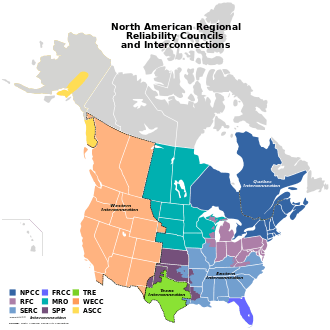Texas Interconnection

The Texas Interconnection is one of the three minor alternating current (AC) power grids in North America. The other two minor interconnections are the Quebec Interconnection and the Alaska Interconnection. The two major interconnections are the Eastern Interconnection and the Western Interconnection.
All of the electric utilities in the Texas Interconnection are electrically tied together during normal system conditions and operate at a synchronized frequency operating at an average of 60Hz. The Texas Interconnection covers most of the state of Texas.
Interconnections can be tied to each other via high-voltage direct current power transmission lines (DC ties), or with variable-frequency transformers (VFTs), which permit a controlled flow of energy while also functionally isolating the independent AC frequencies of each side. The Texas Interconnection is tied to the Eastern Interconnection with two DC ties, and has a DC tie and a VFT to non-NERC systems in Mexico. There is one AC tie switch in Dayton, Texas that has been used only one time in its history (after Hurricane Ike).
On October 13, 2009, the Tres Amigas SuperStation was announced to connect the Eastern, Western and Texas Interconnections via three 5 GW superconductor links.[1]